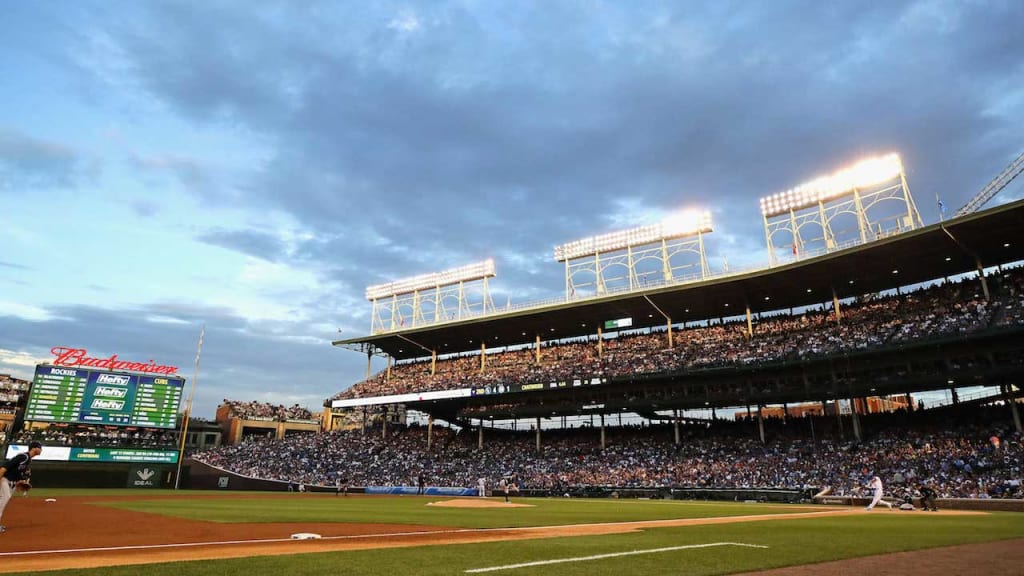
MESA, Ariz. -- Cubs fans will be better protected by extended netting at both Wrigley Field and Sloan Park this year.
The netting at both the Cubs' Spring Training ballpark and Wrigley will extend to the outfield end of the dugouts.
Julian Green, vice president of communications and community affairs, said they sought feedback at the Cubs Convention about extending the netting. "It didn't seem to impact a lot of fans," Green said.
Another change at Wrigley this year will be that Cubs manager Joe Maddon will have a slightly different point of view from the dugout. Both the home and visitors' dugouts are being pushed down their respective lines about 20-30 feet to accommodate new camera wells. Maddon likes to stand at the end of the dugout, closest to home plate. Instead of being lined up with the pitcher's mound, he'll now be behind it.
The dugouts, which were 7 1/2 feet wide, will now be 12 feet wide.
Also new this year at Wrigley Field will be the 1914 Club, located behind home plate. It will hold about 700 people and is effectively sold out, Green said.
Renovation work is underway at Wrigley with crews working until 8 p.m. CT.
The new seating bowl was expected to be completed in the next few weeks. Visiting teams will have new batting cages plus a video room, a dining room and extra space. The additional space will be on a lower level from the existing clubhouse.
Most of the work during this phase of Wrigley's renovation will help the ballpark function, said Carl Rice, vice president of Wrigley Field restoration and expansion.
"A big part of the improvements was about improving the electrical grid, the sewer system, the gas lines, the problems we had with flooding," Rice said. "At this stage, we're really conquering a whole lot of issues."
They've significantly improved the power grid at the ballpark, too.
"Now what we've done is made it so Wrigley Field is no longer on life support," Rice said. "It has enough of a distribution system from the power grid, the water grid, people's gas, to support itself."

